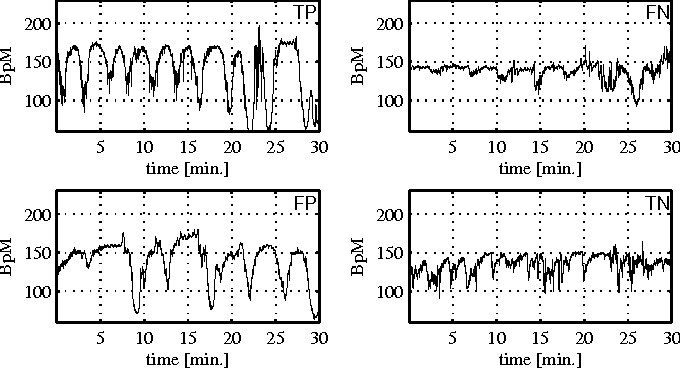Sparse Support Vector Machine for Intrapartum Fetal Heart Rate Classification

Abstract
Fetal Heart Rate (FHR) monitoring is routinely used in clinical practice to help obstetricians assess fetal health status during delivery. However, early detection of fetal acidosis that allows relevant decisions for operative delivery remains a challenging task, receiving considerable attention. This contribution promotes Sparse Support Vector Machine (SVM) classification that permits to select a small number of relevant features and to achieve efficient fetal acidosis detection. A comprehensive set of features is used for FHR description, including enhanced and computerized clinical features, frequency domain, and scaling and multifractal features, all computed on a large (1288 subjects) and well documented database. The individual performance obtained for each feature independently is discussed first. Then, it is shown that the automatic selection of a sparse subset of features achieves satisfactory classification performance (sensitivity 0.73 and specificity 0.75, outperforming clinical practice). The subset of selected features (average depth of decelerations, baseline level, and variability H) receive simple interpretation in clinical practice. Intrapartum fetal acidosis detection is improved in several respects: A comprehensive set of features combining clinical, spectral and scale-free dynamics is used; an original multivariate classification targeting both sparse feature selection and high performance is devised; state-of-theart performance is obtained on a much larger database than that generally studied with description of common pitfalls in supervised classification performance assessments.